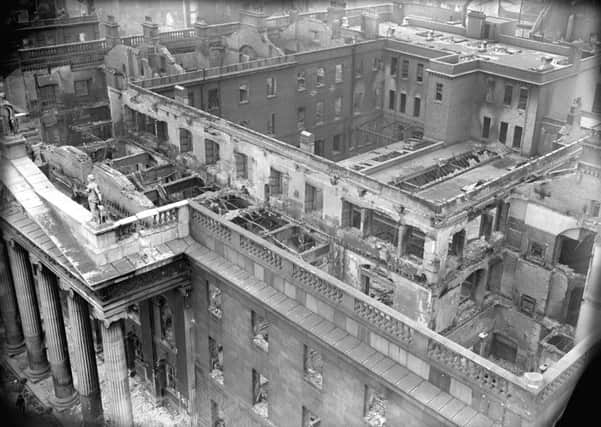The Rising worsened division, so it is important to remember but not celebrate it


Firstly, the Easter Rising was not a revolution. Essentially most of those who took part in the Easter Rising (Connolly being an exception) were social conservatives. Pearse’s vision of Ireland’s future was essentially the recreation of the traditional nineteenth century peasant society which he admired so much when he observed it in the west of Ireland.
The 1920s brought little of the social reform so badly needed by the south of Ireland. One of the Sinn Fein’s few social policy documents of the period immediately after the Easter Rising, the Democratic Programme of 1919, was largely ignored in legislation in the following years.
The Easter Rising victimised the innocent.
Advertisement
Hide AdAdvertisement
Hide Ad

The majority (54%) of those killed during the Easter Rising were civilians. Forty of the dead were children. Those who carried out the Easter Rising deliberately selected central locations in Dublin, such as the GPO, where they knew there would be large numbers of civilians put at risk.
The Easter Rising ensured the gun would be part of Irish politics for the next 100 years.
The IRA throughout the twentieth century, including the 1969-1998 “Troubles” has claimed that its legitimacy comes from the armed struggle embraced and pursued in 1916.
Therefore, it can reasonably be argued that the “Troubles” of 1969-1998, which cost well over 3,000 lives, are part of the legacy of the Easter Rising. Furthermore, participants in the Easter Rising become role models for international terrorism. For example, Michael Collins was an inspiration to Israeli terrorists in the 1940s.
Advertisement
Hide AdAdvertisement
Hide Ad

The Easter Rising failed to cherish “all the children of the nation equally” as the insurgents claimed to guarantee in the Proclamation of Independence. The Protestant population in the 3 southern provinces of Ireland dropped drastically in the 1920s. Between 1911 and 1926, the population of Protestants in the south of Ireland fell by almost 30%.
While the horrific impact of World War I undoubtedly accounts for part of this, there can also be no doubt that Protestants in the south suffered badly in the years after 1916. Protestants in some areas, particularly Co. Cork, were deliberately targeted by the IRA during the War of Independence. During the early years of the Irish Free State Trinity College graduates (most of whom were Protestant) were discriminated against in job applications.
Many Protestants felt they had little choice other than to leave the Irish Free State.
Finally, the Easter Rising contributed to the divisions in Ireland which still exist today.
Advertisement
Hide AdAdvertisement
Hide AdCarson was so appalled by the Easter Rising that he offered 50,000 members of the UVF to help to quell it. He and other unionists saw the rebellion as an act of treason and further proof that nationalists should not be trusted to govern Ireland. After the Northern Ireland state was formed in 1921, the Unionist government was resolute in preserving the border between Northern Ireland and Irish Free State (and later the Republic of Ireland).
Today Unionist politicians maintain that the union between Northern Ireland and the rest of the United Kingdom is stronger than ever.
Therefore, whilst it is important to remember the Easter Rising, I do not believe it should be celebrated. It would be more appropriate in my view to reflect on the damage those responsible did to their country and to their people.
Fin Lappin, Dollingstown, Craigavon, Co Armagh